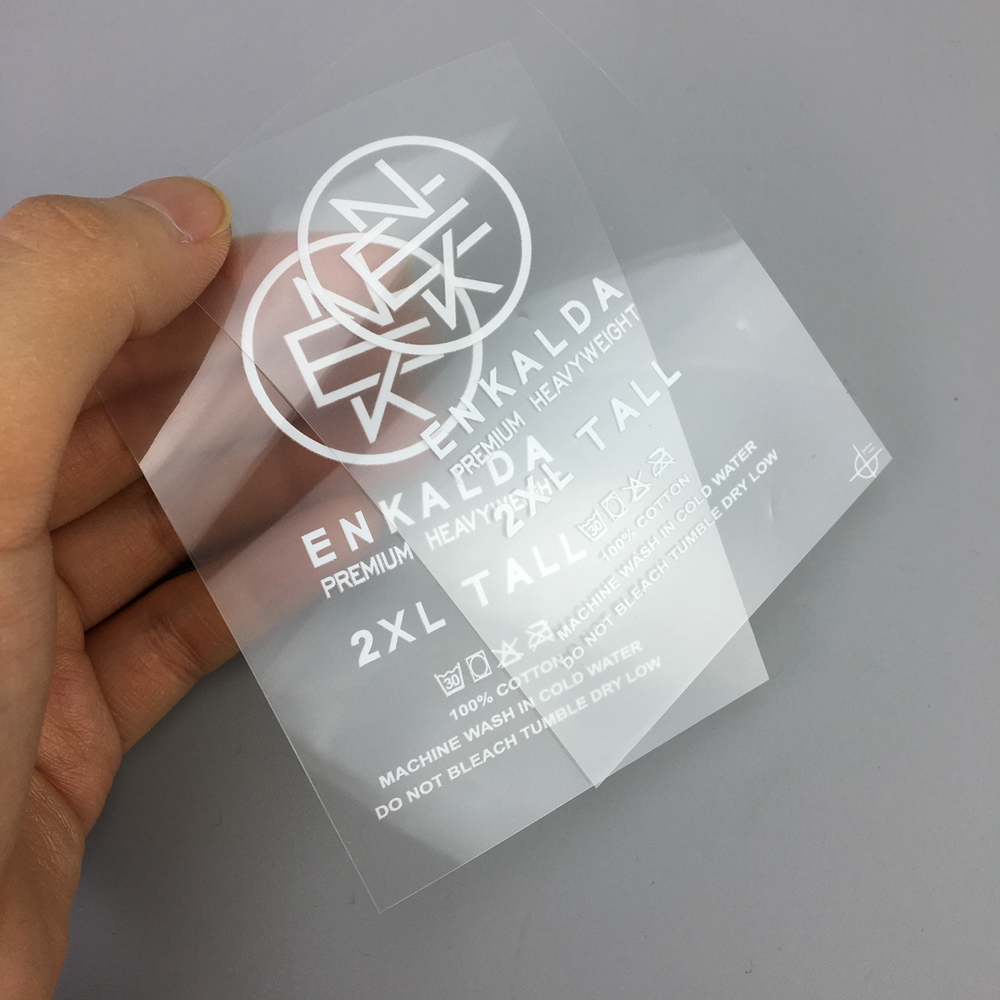Heat Transfer Labels are also referred to as “tag-less tags” since the image, artwork, or label information is transferred directly to the garment using heat. Taking advantage of this well-known approach, which is routinely used to personalize t-shirts, the apparel industry attempts to eliminate the need for traditional labels.
To better satisfy the needs of their clients, clothing companies that produce t-shirts or bodysuits specifically designed for athletes (as well as for infants) are now using heat transfer clothing labels.
With the help of a silkscreen method, custom heat transfer clothing labels for garments can be created.
To produce custom heat transfer labels for clothing, it is necessary to heat press or iron the logo or design onto the special transfer paper or synthetic film before applying it to the clothes fabric. Heat transfer labels are an excellent choice for apparel companies: underwear, T-shirts, swimwear, and activewear.
There are three essential factors to consider when using a custom heat transfer clothing label to decorate.
● Time: the amount of time that heat must have given to the design/garment, is indicated by the word “time.”
● Temperature: The temperature at which the design will stick to the cloth to the greatest extent possible.
● When applying heat, the amount of downward force required is pressure.
What are the advantages of custom heat transfer clothing labels?
There are several advantages of using custom heat transfer labels for clothing instead of standard brands. Let us delve deeper into the benefits of heat transfer labels.
1. There will be no more scratching:
The heat transfer labels are gentle on the skin. You itch the back of your neck when you see traditional labelling. On the other hand, heat transfer labels feel like part of the cloth. Even the most delicate skin types are not irritated by the substance used in these labels.
2. Colors that are simple to use:
The heat transfer clothing label method was usually used to make bespoke T-shirts. As a result, it’s a great way to show off as many colors as you like on your label. Any intricate or detailed design cannot be displayed on the sewn-on tags, especially with several colors. Each line and dot are transferred to the clothes using the heat transfer process.
3. Customized look:
If you want your company’s label to be as sharp and detailed as an image, you need heat transfer labels. It offers the brand a clean and elegant appearance. It’s ideal for abrasive textiles like jeans, T-shirts, and hats.
4. Enhance your brand’s image:
The heat transfer labels make your brand logo stand out. Honestly, how many of us are enthusiasts of some large fabric label adhering awkwardly to a great piece of clothing? The majority of the time, they appear to be out of place. While the heat transfer labels do not detract from the overall appearance of the garment, they do become a part of it.
5. Permanent color
Heat transfer labels provide a permanent color that will not fade over time. The title will maintain vivid colors and a clean appearance even if the clothing fades and ages. These labels are resistant to chemicals and atmospheric conditions. They don’t fade or crack after washing or being in heat or dampness. Their life expectancy is pretty high.
6. Budget-friendly:
Heat transfer labels are your friends if you are running tight on budget or cutting costs. You don’t need many machines to weave or embroider a label and then sew it onto your garment line.
Heat transfer labels require only one machine, and your entire garment line will be ready in a matter of hours. You’ll also need fewer employees to complete the labelling process.
7. Manufacturing time is reduced:
The heat transfer garment labels may be printed in a matter of seconds. The printing will take only a few seconds, even if the design comprises a detailed graphic with numerous colors.
On the other hand, traditional labels take time to weave before being sewed into the garment. Faster printing makes the heat transfer labels the primary option of many producers.
Heat transfer labels are compatible with a wide range of textiles. It makes no difference if the fabric is cotton, silk, nylon, synthetic, or wool. The heat transfer process prints the label precisely on any material with no issues.
8. Suitable for all fabrics;
Heat transfer labels are the future way because they are environmentally friendly. We cannot afford to ignore climate change and pollution as a species. Heavy metal, PVC, and lead are not used on these labels. The colors are non-toxic and water-soluble. These labels take the least amount of energy to manufacture.
9. Best for athletic wear:
When a person sweats, traditional labels become itchy and cause skin irritation. As a result, they are unsuitable for persons who engage in vigorous physical activity. Sportswear with long-lasting choices is always desired.
Sportswear should tolerate sweating, heat, and diverse weather situations. In addition, the lighter weight of the apparel boosts productivity. As a result, heat transfer labels have gained popularity in the sportswear garment sector.
Lucas Noah, armed with a Bachelor’s degree in Information & Technology, stands as a prominent figure in the realm of tech journalism. Currently holding the position of Senior Admin, Lucas contributes his expertise to two esteemed companies: OceanaExpress LLC and CreativeOutrank LLC. His... Read more
